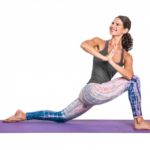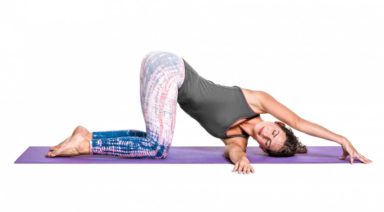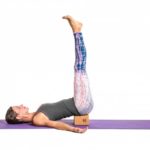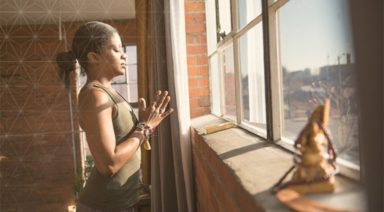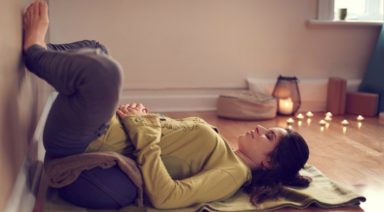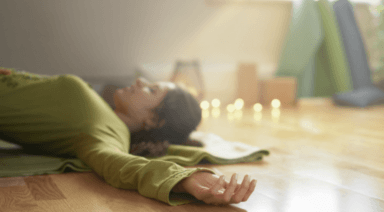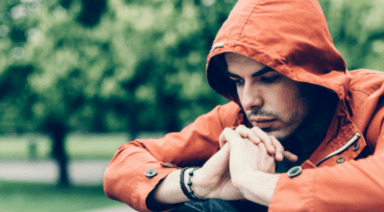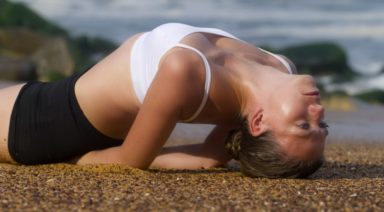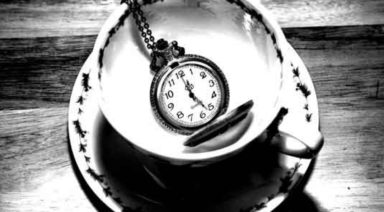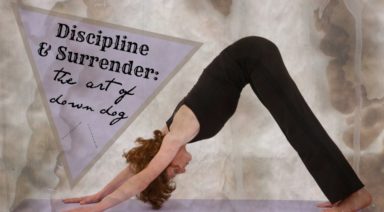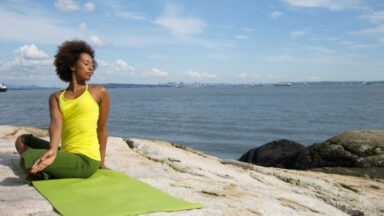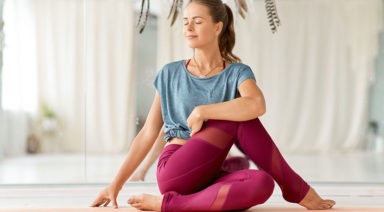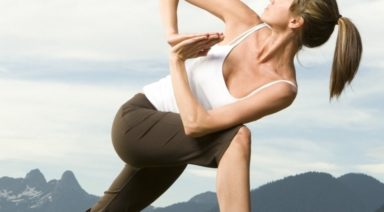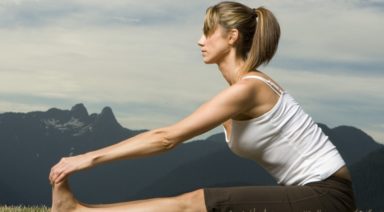Uttanasana: Standing Forward Bend
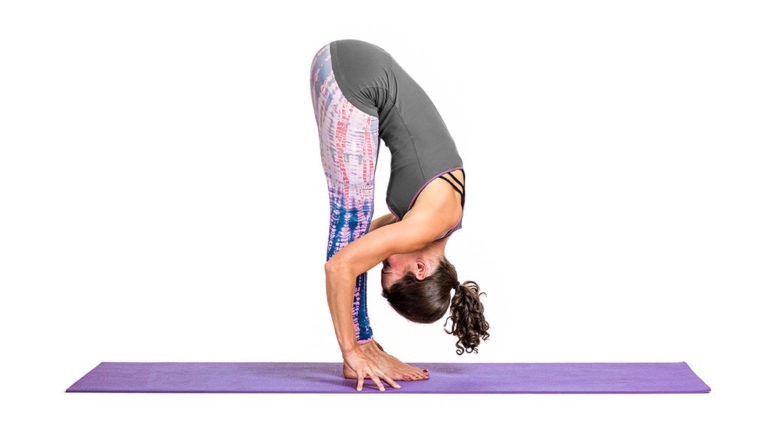
ADJUSTMENTS | BENEFITS | SEQUENCING | SANSKRIT | STEPS
A soothing posture for body and mind, uttanasana (OOT-tan-AHS-ahna), or standing forward bend, is straightforward but far from simple. Requiring flexibility in hamstrings, hips, and calves, uttanasana also requires patience. Watch the ebbs and flows in your body and life reflected in this simple posture.
Philosophy + Origin
In uttanasana, knowing when to accept intensity and when to be content with where you are is key to steady progress without injury or frustration. It’s easy to try to push for more — with uttanasana, this means wanting to be more flexible or pushing further into the pose. Rather than struggling, use the posture to practice santosha (contentment). Can you accept both the intensity and your capacity right now?
ADJUSTMENTS/MODIFICATIONS:
- Separate your feet to give your hamstrings room — keep your feet parallel.
- If your back is uncomfortable in this shape, practice with knees bent.
- If the ground seems far away, place your hands on blocks.
- To deepen the posture, hold onto the backs of your ankles or grasp opposite forearms behind your calves.
- To deepen the stretch at the backs of your legs, elevate the balls of your feet with a rolled mat or blanket
STEP-BY-STEP:
- Start standing with your hands on your hips. Exhale to hinge from the hips and bend forward. Think about creating as much length as possible from your hips to your head.
- Release your fingertips toward the ground or your blocks.
- Root down into the four corners of your feet.
- Release the back of your head and neck.
- On inhales, feel your torso lengthen, and on exhales, feel your chest reach toward your toes.
- Stay in uttanasana for up to one minute.
- To exit the pose, return your hands to your hips and slowly lift up, keeping the length in the front and back of your torso.
PREPARATORY POSES:
- Downward-facing dog | Adho mukha svanasana
- Head to knee pose | Janu sirsasana
- Reclined hand to toe pose | Supta padangusthasana
SEQUENTIAL POSES:
- Wide-angle forward fold | Upavistha konasana
- Half standing forward bend | Ardha uttanasana
- Seated forward fold | Paschimottanasana
COUNTER POSES:
- Tadasana | Mountain pose
- Childs pose |Balasana
- Resting pose | Savasana
SANSKRIT:
- Ut = intense
- Tan = to stretch
- Asana = pose
PHYSICAL BENEFITS:
- Stretches hips, hamstrings, calves.
- Reduces headaches.
- Improves sleep.
ENERGETIC BENEFITS:
- Calms and soothes the mind.
- Reduces fatigue and anxiety.
- Relieves stress.
Legal Disclaimer Before participating in any exercise program or using any fitness products or services that may be described and/or made accessible in or through the Gaia Website and/or the Services, you should consult with a physician or other healthcare provider. Read more about Gaia’s Terms Of Use.
Parivrtta Utkatasana: Revolved Chair Pose
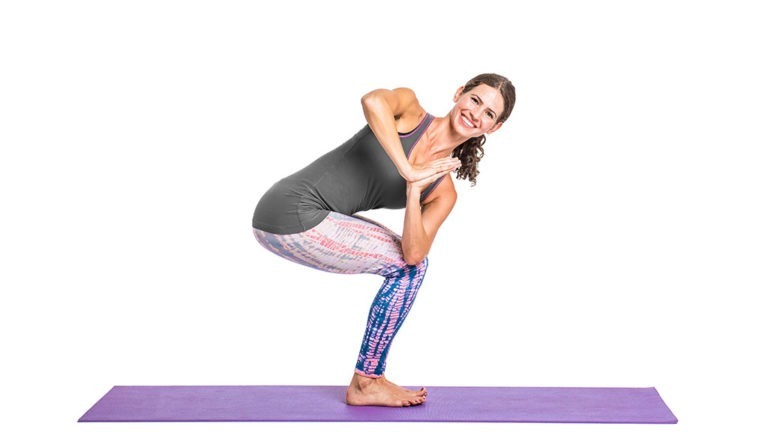
ADJUSTMENTS | BENEFITS | SEQUENCING | SANSKRIT | STEPS
Parivrtta utkatasana (par-ee-vrit-tah OOT-kah-TAHS-anna) lives up to the Sanskrit translation of power and ferocity. A great way to strengthen and lengthen the leg muscles, this challenging posture also lengthens and improves mobility in the spine. Practicing parivrtta utkatasana will give a feeling of groundedness in the lower half of the body and open spaciousness in the upper body.
Philosophy + Origin
Parivrtta utkatasana is an opportunity to practice the concept of “rooting to rise.” In order to deepen the posture, you must find strength in the legs and lightness in the spine and upper body. While it’s easy to only focus on deepening the twist, the best results come from first setting up your foundation. This philosophy of building a strong foundation through rooting and grounding is helpful in life. While your goals and aspirations, even your daily to-dos, can constantly demand your attention, get strong through your roots before you try to spread your wings.




